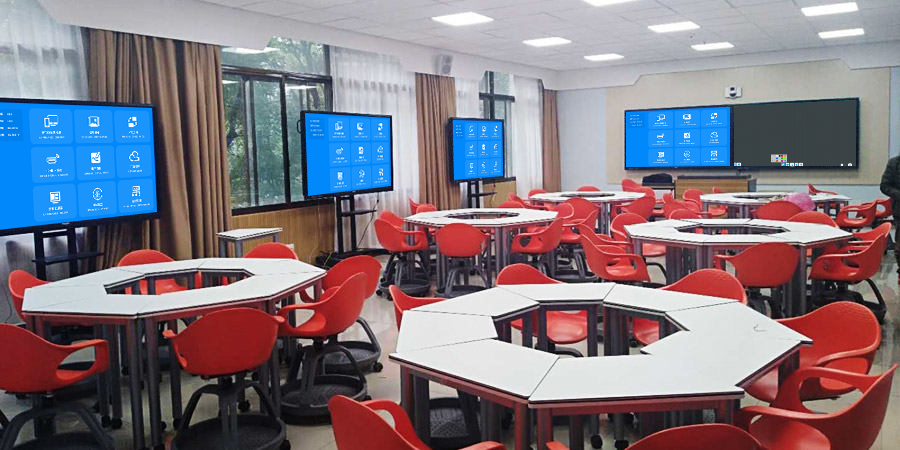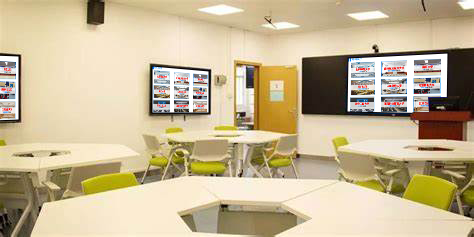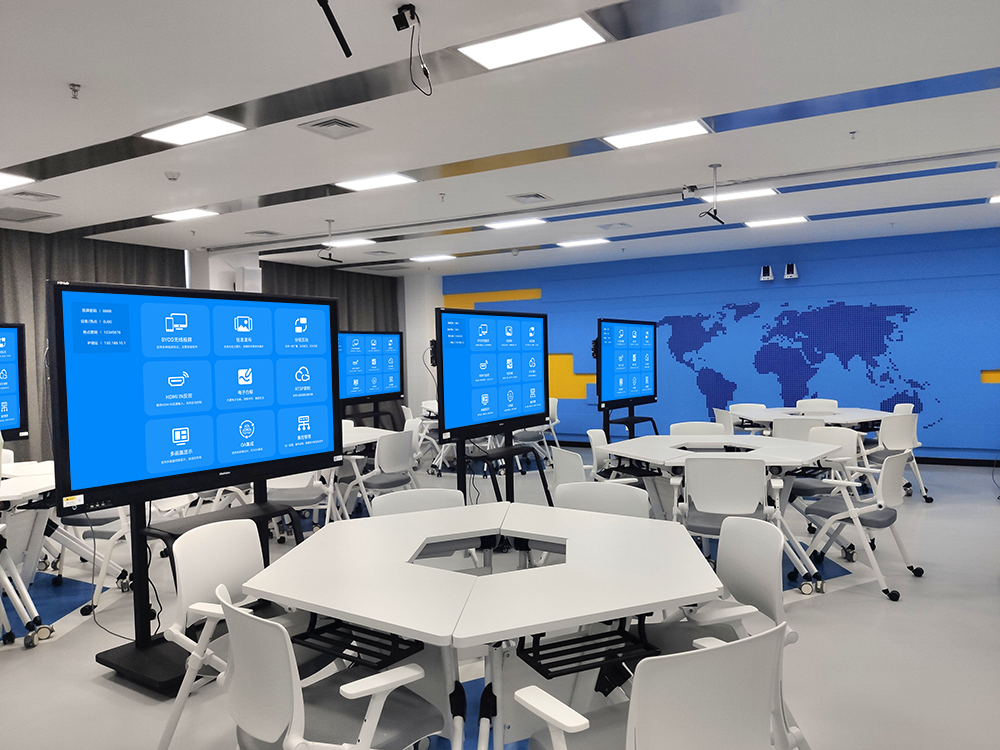Smart Classrooms: Reimagining Teaching, Deepening Interaction
Smart classrooms, with technology as their link, break the traditional “blackboard + chalk” model. Through device interconnection, real-time interaction, and resource consolidation, they transform knowledge transfer from one-way infusion into two-way resonance, making the classroom a space for co-creation between teachers and students.
I. All-Device Interconnection: Enabling Free Flow of Teaching Content
The classroom’s main screen forms a “mesh connection” with phones, tablets, and computers, supporting wireless screen mirroring for all system devices. Teachers’ lesson plans can be cast from their computers to the main screen, student assignments can be pushed from tablets to group screens, and experimental phenomena captured by phones can be mirrored to the large screen in real-time for the whole class to observe. In a 60-person classroom, 8 devices can connect simultaneously, and switching displays takes only 1 second. In a math class, the teacher can mirror an example problem from their computer, students submit their problem-solving steps from their tablets, and excellent answers can be “pinned” to the main screen with one click. Visualizing thought processes no longer relies on raising hands to speak.
(I) Seamless Cross-System Compatibility
Whether it’s iOS courseware annotations, Android error question collections, or Windows dynamic charts, all can run smoothly within the same system. In an art class, sketches drawn on an Apple tablet and real-life photos taken with an Android phone can be compared in a split-screen view on the main display, ensuring that device differences do not hinder creative brainstorming.
(II) Stable Connection Even Offline
When the internet is down, the system automatically switches to a local hotspot mode, ensuring that teachers mirroring courseware from their phones and students answering questions on their tablets remain unaffected. In classes experiencing sudden network failures, teaching can proceed as usual, preventing interruptions to the flow of thought due to technical issues.
II. Real-Time Interaction: Ensuring Every Student Is Seen
(I) Instant Feedback on Answer Data
Teachers can initiate multiple-choice, fill-in-the-blank, and handwritten questions. After students answer on their tablets, the system generates a data dashboard in 3 seconds: showing multiple-choice accuracy, high-frequency errors in fill-in-the-blanks, and excellent examples of handwritten responses. In an English grammar quiz, for a tense question with a 70% error rate, the teacher can immediately adjust their explanation focus, precisely targeting knowledge blind spots.
(II) Collaborative Annotation and Co-creation
During group discussions, members can annotate mirrored content with different colored pens to express their viewpoints, and the group leader can integrate ideas into a mind map with one click. During whole-class sharing, the results from 6 groups are presented in a split-screen layout on the main screen. The teacher can use a red pen to circle common issues, and the annotation process is automatically synchronized to student devices. In a Chinese language class analyzing novel characters, the character analysis charts from each group are displayed side-by-side on the large screen, making comparisons intuitive and fostering mutual inspiration of ideas.
III. Resource Consolidation: Making Teaching Effectiveness Traceable
(I) Full Digital Archiving of Classroom Sessions
Teacher courseware, interaction records, student annotations, and group results are automatically saved to the cloud, categorized by “course – chapter – knowledge point.” After class, students can review recorded lessons with teacher annotations, pausing to re-take notes on key content. Parents can view their child’s answer data through their devices to understand their level of knowledge mastery.
(II) Automatic Collection of Incorrect Answers
Questions that students answer incorrectly are automatically added to their personal “error notebooks.” The system links these questions to relevant video segments of the classroom explanation. When reviewing incorrect answers, students can click on a question to directly jump to the teacher’s original analysis, avoiding ineffective rote learning where they “know the answer but don’t understand the principle.”
IV. Scenario Innovation: Visible Efficiency Gains
- Science Lab Classes: Students use their phones to record cell division under a microscope, mirror it to their group screen for observation, and the teacher annotates key stages on the main screen. The experimental phenomena are preserved as dynamic materials for repeated review after class.
- Humanities Debate Classes: Pro and con sides upload arguments in real-time from their tablets, and the main screen displays the clash of viewpoints in a split-screen format. The teacher can annotate logical flaws, and after the debate, a “thought map” is generated for clear review.
- Remote Synchronized Classrooms: Urban and rural schools connect via the system. Content from the urban teacher’s main screen is synchronized to the rural classroom, and rural students’ answer data is reflected in real-time. Quality resources transcend geographical limitations.
The traditional classroom model of “teacher lectures, students take notes” is being overturned. Smart classrooms transform teachers from “knowledge transporters” into “guides,” and students from “passive receivers” into “active explorers.” The interaction data from every lesson continuously optimizes the teaching feedback loop, making education more precise and more empathetic.